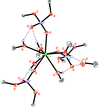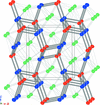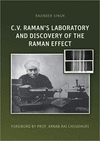issue contents
May 2018 issue

Cover illustration: Vibrational analysis of a platinum–spermine complex (Pt2Spm) was carried out using optical (Raman and FT–IR) and neutron-based (INS) spectroscopies coupled to quantum mechanical methods. Pt2Spm is a potential new anticancer drug, with promising results against low-prognosis metastatic human breast cancer. See Batista de Carvalho, Parker, Batista de Carvalho & Marques [Acta Cryst. (2018), C74, 628–634].
research papers


































book reviews



 journal menu
journal menu





































